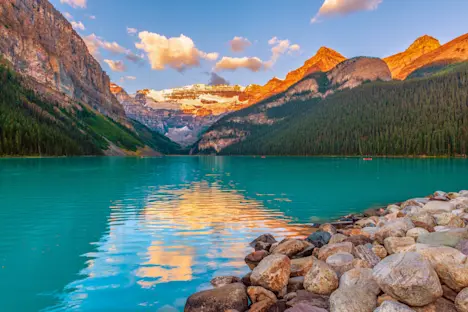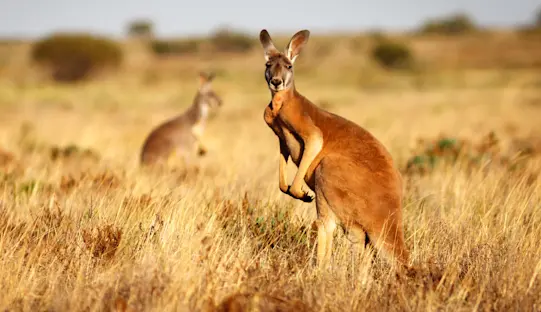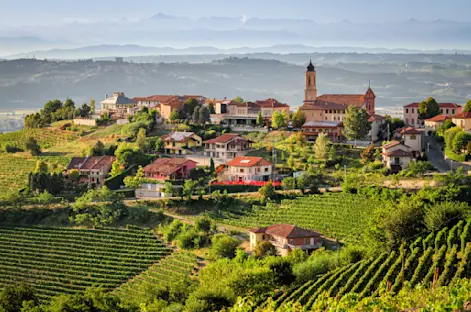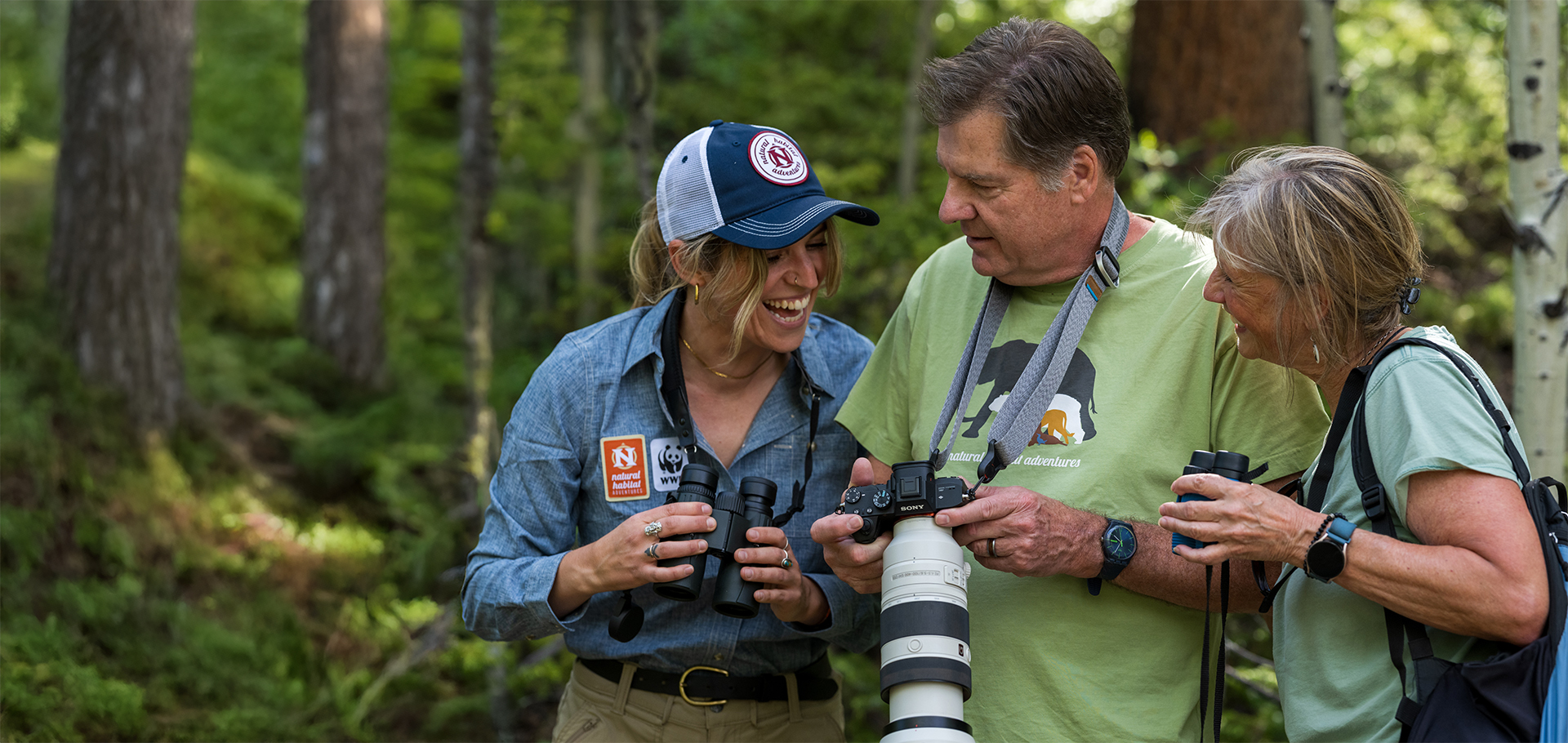Imagine capturing a single moment each day—a shaft of light on your favorite tree, a bird landing on your windowsill, or the shifting colors of the sky at dusk.
This small, daily act of photography is more than just snapping a picture. Developing a daily photo habit can make you healthier and happier while sharpening your photography skills, cultivating creativity and community, and supporting the conservation efforts important to you.
Here’s why a simple daily photo practice can reshape your wellbeing and deepen your connection to conservation and your community:

© Nat Hab Expedition Leader Jim Beissel
1. Daily Photo Practice Boosts Mental Health
Think of your daily photo practice as a visual gratitude list—have you seen the benefits of that? By focusing on something beautiful or interesting each day, your mindset shifts toward the positive, toward good. It can lower blood pressure and heart rate and contribute to greater connectedness and creativity.
Research shows that practicing gratitude improves mental health, and photography provides a unique, simple way to do that. Documenting a small moment—a blooming flower, a bird in flight, or the changing colors of the sky in your neighborhood—can brighten your mood and lift your spirits.
- Fosters Mindfulness: Taking a moment to capture something every day draws you into the present, encouraging mindfulness. In the busy pace of daily life, these mindful moments help you slow down and reconnect with your surroundings.
- Health Benefits: The simple act of taking a daily photo—especially in nature—can stimulate feelings of awe, or a connection to something larger than ourselves. Research led by Dr. Dacher Keltner shows that experiencing awe improves physical health, reduces stress, and increases wellbeing.
Foster Connection with Nature: A couple of years ago, my husband, who works at a desk all day, started posting a daily photo on Instagram. As a result, he’s fallen in love with a tree near our home. Now, he notices the light on it in a way that’s nearly mystical. He’s thrilled as it changes from season to season, sometimes showing me the photo he’s taken on the afternoon dog walk. The tree was always there; he just didn’t see it the same way. What will you see—and come to love—through your daily photos?

Daily Photo Habit | Mist rising around my favorite tree @ Chris Ensor
2. Daily Photography Can Get You Outside
A daily photo habit encourages outdoor time and can transform ordinary walks into “awe walks.” Research on nature walks, particularly for older adults, shows they promote positive emotions, lessen distress, and improve social connectedness—they even make us kinder and happier.
Research also shows that even viewing nature photos can reduce stress, so on days you can’t get out, try editing your photos or learning more about conservation photography.
- Creates Opportunities for Awe: Awe is not limited to the extraordinary; it can be found in the everyday. Amie Gordon’s research at UC Berkeley found that people regularly experience awe in everyday settings, whether observing a morning mist, a squirrel in the yard, or trees on a city street.
- Benefits mental and physical wellbeing: Studies have found that spending time outdoors lowers blood pressure, reduces anxiety, increases fitness, reduces stress and makes us happier and more creative. When you bring a camera on your walk, it becomes an intentional practice, helping you capture small wonders that you might otherwise overlook.
- Long-Term Wellness: A study published in Emotion found that older adults who took regular nature walks reported less anxiety, greater social connection, and reduced negative emotions over time. These benefits contribute to greater longevity and quality of life.

© Nat Hab Expedition Leader Mike Hillman
3. Sharing Your Photos Can Foster Social Connection
Building a habit of photographing nature can deepen your appreciation for the natural world and connect you with others who feel the same.
- Fosters a Personal Connection to Nature: Research from the Greater Good Science Center shows that time spent in nature increases our desire to protect it, creating a foundation for conservation. This personal connection can make a significant difference.
- Creates Visual Advocacy: Sharing your photos online raises awareness about local wildlife, seasonal changes, and ecosystems, encouraging others to appreciate and protect their natural surroundings. Casual everyday photos can inspire broader conservation awareness, showing others the beauty of even small environments.
- Supports Eco-Friendly Behaviors: People who spend time in nature are more likely to adopt sustainable practices. When you develop a daily photo habit that connects you with nature, you’re cultivating a mindset that values preservation and sustainability. This connection, WWF notes, is essential to support conservation efforts that benefit people, biodiversity, and the planet.

© Nat Hab Expedition Leader Jim Beissel
4. Develop Your Photography Skills
A daily photo habit not only makes you happier but can also make you a better photographer. Regular practice naturally develops your unique personal style, improves your eye for composition, and allows you to explore different photography gear and techniques.
- Builds Creative Muscle: Taking a daily photo encourages creative thinking. Nature, in particular, can inspire creativity because its unpredictable scenery allows your mind to wander and make connections. You may begin noticing the intricate patterns on leaves or the way light reflects on water, building creativity that can benefit other areas of life.
Check out WWF’s Top Ten Outdoor Photography Tips for expert advice on shooting photos in nature.
- Develop a Photographer’s Eye: Over time, you’ll start seeing potential shots everywhere, training yourself to notice details, symmetry, and framing. Each day’s photo becomes an opportunity to experiment with new settings, gear, or lighting, which will strengthen your skills over time.
- Progressive Skill Building: The discipline of a daily habit builds foundational skills that grow gradually. Whether learning how to control shutter speed for motion shots or practicing macro photography with plants, a daily habit will transform your skills. WWF’s Top Photography Tips can provide additional guidance, from framing to capturing movement, to help refine your approach.

© Nat Hab Expedition Leader Sonia Israel
5. Your Photos Can Support Conservation
Sharing your daily photos can enhance the experience by creating opportunities for social connection and conservation advocacy.
Conservation photography goes beyond capturing beautiful images of the natural world; it combines the artistry and experience of nature and wildlife photography with storytelling to become a powerful tool for environmental advocacy.
Posting your photos online or even starting a photo blog or journal fosters interaction and can build a sense of community around shared interests.
- Build Community through Social Media: Social platforms where photography is the focus allow you to connect with others who appreciate nature, wildlife, and conservation photography. Engaging with fellow photographers and conservationists provides inspiration, new ideas, and motivation.
- Encourages Connection in Daily Life: Photography can serve as a bridge to conversations and social connections. When you have a small group with shared interests, organize local photo walks!
- Enhances Purpose and Reduces Loneliness: Sharing conservation stories and subjects in your local area and beyond can raise awareness and build community. As we age, finding ways to connect with others and share beauty and discovery fosters wellbeing.
WWF’s research on valuing nature emphasizes how positive connections with the natural world improves life satisfaction and community ties, showing that meaningful experiences in nature benefit everyone. If you’re interested in becoming a conservation photographer, and developing how we value nature, check out the post: 5 Steps to Become a Conservation Photographer.

© Nat Hab Expedition Leader Jim Beissel
How to Begin Your Daily Photo Habit
Starting a daily photo habit doesn’t require anything but taking one photo per day. That’s it. They do not have to be good or shared. Here are a few practical tips to begin:
- Build a Daily Habit or Practice: Commit to taking one photo each day, even if it’s just in your house on your smartphone. Choose a time that fits your routine—early morning, lunch, or evening walk—or vary the time as needed. Focus on building the habit first.
- Choose a Theme or Focus: For structure, you might want to consider a theme. Some people base theirs on content: “morning light,” “signs of the season,” “backyard wildlife,” or “in the neighborhood.” For a while last year, I focused on houseplants—now I have more than ever! Sometimes, I look for beauty or things I’m grateful for. Themes can inspire you and make your collection cohesive.
- Some photographers focus their daily photo habits on skills, trying:
- black & white vs. color
- fixed focal length
- photographing in low light
- capturing wildlife movement
- long exposure with a tripod
- play with ISO, shutter speed, and aperture
- composition: using lines, symmetry, reflections or repeating patterns
- a monthly focus on a particular color
- going outside your normal style. If you’re usually drawn to architecture, try nature; if you are automatically drawn to landscape, look for wildlife.
- Reflect on Your Photos: Whether you post on social media or keep a personal journal, reflecting on your photos periodically may enhance your practice. Review your photos every month or quarter. Where are you finding beauty? What patterns do you see?
Developing a daily photo habit is a rewarding journey that can improve wellbeing, foster creativity, and deepen your connection with nature. Over time, you may find yourself noticing beauty you once overlooked and experiencing a greater sense of purpose. And, just as importantly, you’ll join a growing community of people who, through photography, advocate for the natural world we all share.

Nat Hab Guest © Lisa Squires
Join a Nat Hab Photo Expedition
If you’d like to combine your daily photo practice with expert instruction and conservation travel, Nat Hab has unveiled 30 new Photo Expedition itineraries with opportunities year-round.
From the remote Himalayan Snow Leopard Quest Photo Expedition to secluded immersion in Lake Clark National Park on the Alaska Bear Camp Photo Expedition or the ultimate 17-day (our longest Photo Expedition to date) Galapagos Wildlife Photo Expedition, Expedition Leaders meet you at your level and help you explore the world with a camera. They provide an enriching experience that leaves you inspired about the planet and conservation.

Nat Hab Photo Expeditions Director Mike Hillman, Alaska Bear Camp © Brad Josephs































